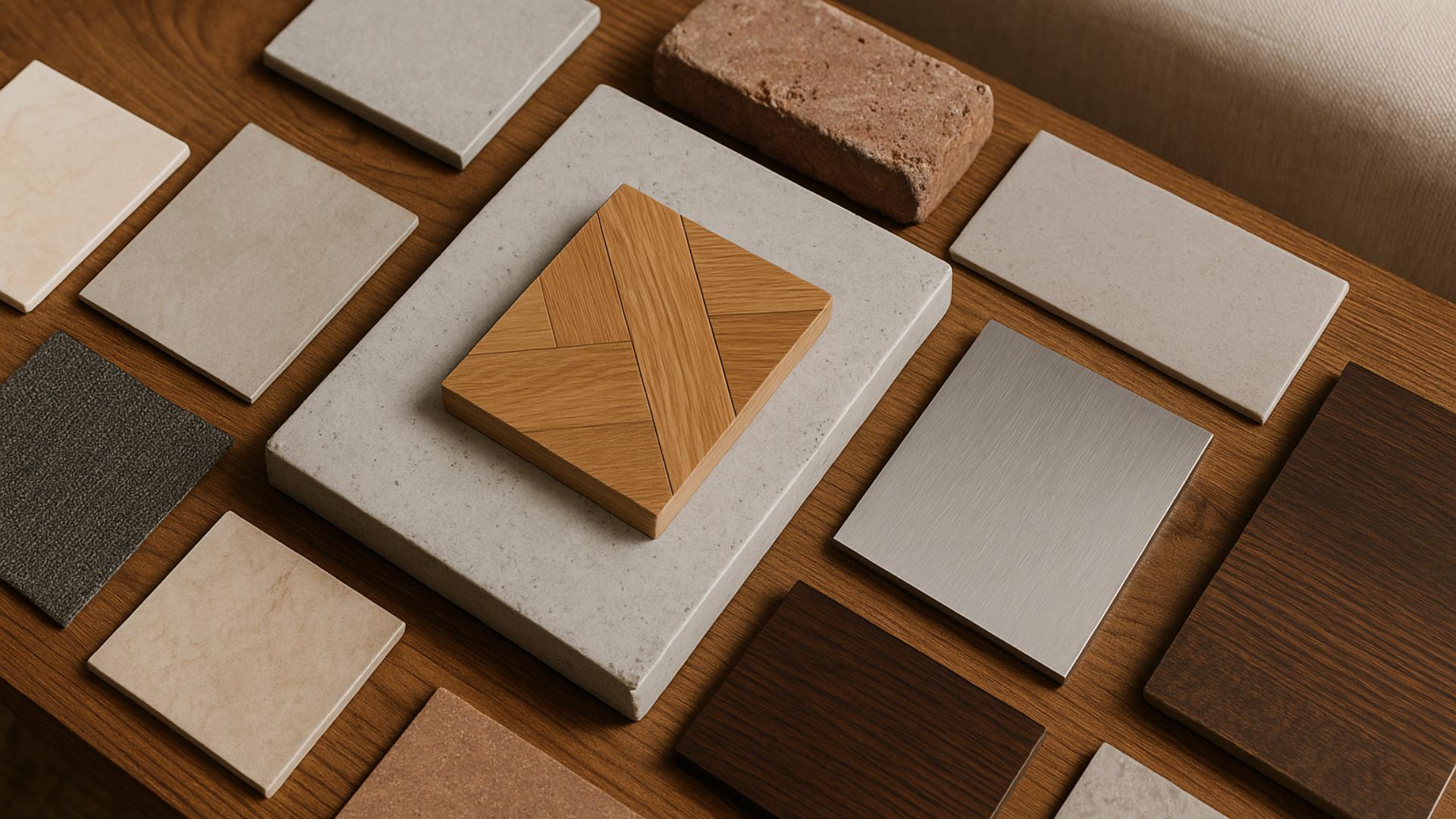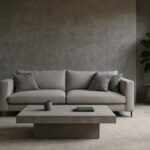In an age where design meets functionality, the art of choosing materials for interior spaces has become a fascinating journey. As someone who has spent years navigating the myriad choices that fill our rooms, I find the intersect of durability and beauty captivating. We often seek a harmonious blend that not only rejuvenates our space but also stands the test of time. Today, as we explore this expansive topic, I invite you to embrace a fresh perspective on interior design—one that celebrates natural materials like wood and stone, while weaving in a modern tapestry of finishes and furniture.
The Beauty of Natural Materials
There’s something undeniably enthralling about incorporating natural materials into our living spaces. The unique textures and colors of wood and stone can transform a room, making it feel alive and uniquely yours.
Wood: A Timeless Choice When it comes to wood, its versatility is unmatched. Whether it’s the warm hues of oak or the rich depth of mahogany, each type offers its own story. Beyond its aesthetic allure, wood’s durability makes it a steadfast choice for flooring and furniture. These elements not only define a room’s character but also promise longevity, standing resilient in the face of life’s daily hustle.
Stone: A Touch of Elegance In juxtaposition, stone provides a touch of elegance that few materials can rival. From the cool sophistication of marble to the rugged charm of slate, stone can elevate a space effortlessly. I often think of stone as nature’s masterpiece—each slab a unique work of art. Whether it’s a countertop or an accent wall, stone has the power to ground a room, adding a sense of permanence and luxury.
Making Smart Choices in Design
Navigating the world of interior design is akin to painting on a blank canvas—each choice adds a layer of personality and function. While beauty is subjective, the underlying principle of design is ensuring that every element serves a purpose.
Function Meets Form A well-designed space is one where functionality meets form. Consider the materials—how do they contribute to the room’s overall feel? Are they enhancing the usability or merely acting as decor? In my experience, choosing high durability options for high-traffic areas ensures that both form and function are maintained over time.
Balancing Aesthetics and Practicality As much as we adore the natural materials that bring our spaces to life, it’s crucial to balance aesthetics with practicality. While a sleek stone floor may appeal visually, consider how it interacts with the rest of the room. Does it complement or contrast with the wooden elements? This interplay can define the success of your design. {image_content}
Choosing the Right Finishes
Selecting the perfect finishes is akin to choosing the right outfit for a special occasion. It’s about accentuating features and creating a cohesive look that serves both style and durability.
The Subtle Art of Finishing The right finish can elevate a material from ordinary to extraordinary. A matte finish on wood can highlight its grain and texture, while a glossy finish might be better suited to modern, sleek aesthetics. The type of finish also plays a pivotal role in a material’s durability—a protective layer can help preserve high-traffic surfaces for years.
Color and Texture: A Dynamic Duo Color and texture are integral to the finishing process. They guide the eye through a room and can evoke different moods. Earthy tones create warmth, while cooler hues offer a sense of calm. I often find that a varied palette keeps a space dynamic, and alternating textures can prevent monotony.
Furnishing for Harmony and Balance
The right furniture ties a room together, acting as both a functional piece and a stylistic statement. In my journey through countless interiors, I’ve seen how furniture can make or break the cohesion of a design.
Blending Styles for a Cohesive Look The key is to choose furniture that complements your materials. A wooden table can anchor a space, while a plush couch adds comfort and warmth. I believe that mixing styles—such as pairing industrial metal accents with rustic wooden pieces—can create a unique and inviting ambiance.
Durability Meets Design When selecting furniture, durability is as crucial as style. Opt for pieces that are built to last, ensuring they withstand wear and tear over time. In my experience, well-made furniture that harmonizes with the room’s materials not only enhances its appeal but also stands as a testament to thoughtful design.
Crafting a durable interior is akin to composing a symphony—it requires a delicate balance of materials, finishes, and furniture that work in harmony. By embracing natural materials like wood and stone, making informed choices in design, and selecting the right finishes, we can create spaces that resonate with timeless elegance.
As I reflect on the countless interiors I’ve encountered, it’s clear that successful design isn’t just about creating a beautiful room; it’s about fostering a space that feels like home. By making mindful choices and prioritizing both durability and aesthetics, we can create interiors that not only endure but also inspire every day.
FAQ
What factors should I consider when selecting materials for a long-lasting interior?
When choosing materials for a durable interior, consider the following factors: durability, maintenance requirements, aesthetic appeal, cost, and environmental impact. It’s essential to balance these aspects to ensure your materials stand the test of time while maintaining their look and function.
Which flooring materials are known for their durability?
Several flooring materials are renowned for their durability, including hardwood, tile, and luxury vinyl. Hardwood offers timeless beauty and longevity, while tile provides excellent resistance to wear and tear. Luxury vinyl mimics the look of natural materials while being resilient and easy to maintain.
How can I ensure the materials I choose for my interiors are eco-friendly?
To select eco-friendly materials, look for options that are sustainably sourced, have low VOC emissions, and are recyclable or biodegradable. Certifications like FSC for wood or GreenGuard for low-emission products can guide you in making environmentally conscious choices.
What are some durable options for countertops in kitchens and bathrooms?
Popular durable countertop materials include granite, quartz, and concrete. Granite is known for its natural beauty and toughness, quartz offers a wide range of colors and is resistant to stains, while concrete provides a customizable and robust surface.
How do I maintain the durability of my interior materials over time?
Regular maintenance is key to preserving the durability of your interior materials. This includes routine cleaning, avoiding harsh chemicals, using protective pads on furniture, and addressing any spills or damage promptly. Following manufacturer guidelines can also help extend the lifespan of materials.



